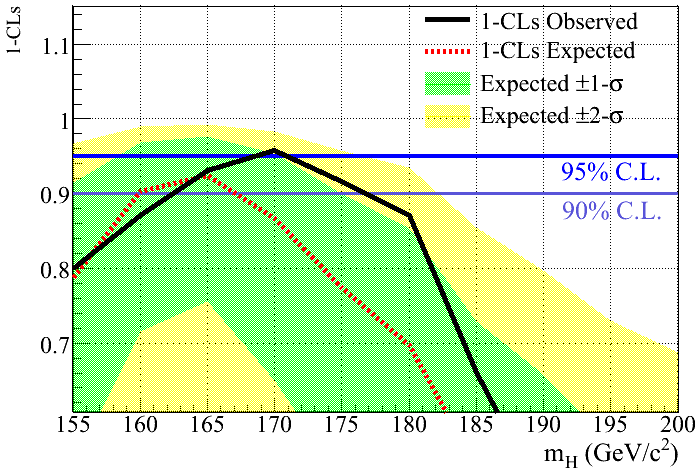Scientists working on the CDF and DZero experiments at the Fermi National Accelerator Laboratory are entering Higgs territory. On Sunday, the two groups reported at a conference in Pennsylvania that for the first time their results directly restrict the allowed mass range for the elusive Higgs boson. The results show that the CDF and DZero experiments are sensitive to Higgs signals that may show up as the two collaborations gather and analyze more data.
"These results mean that the Tevatron experiments are very much in the game for finding the Higgs," said Fermilab Director Pier Oddone. Fermilab issued a press release with the details of these results.
“We have been working toward this exclusion for many years,” said DZero cospokesperson Darien Wood, of Northeastern University. “Of course, our goal is to find the Higgs boson, not just restrict its mass.”
The Standard Model of particles and forces--the theoretical framework for particle physics--predicts the existence of a particle, the Higgs boson, that interacts with other particles of matter--such as electrons and quarks--to give them mass. The mechanism by which particles acquire different mass values is unknown, and finding evidence for the existence of the Higgs boson would address this fundamental mystery of nature.

Sensitivity of the Fermilab experiments to the Higgs boson at various masses
The CDF and DZero collaborations obtained their result by analyzing hundred trillions of proton-antiproton collisions produced by the Tevatron particle collider. While the current data sample did not reveal the Higgs boson, both groups expect to double their data sets in the next couple of years, improving their chance to observe the particle. According to CDF cospokesperson Rob Roser, Fermilab, the two experiments are close to ruling out a Higgs particle with a mass of 165 GeV/c2 and 175 GeV/c2. (At present, the two experiments look for the Higgs particle in steps of 5 GeV/c2.) This graph (right) shows the current sensitivity of the two experiments to the Higgs boson for various mass values. (Because of the way that the Higgs particle is expected to interact with other subatomic particles, it is easier for the Tevatron experiments to exclude--or to find--a Higgs particle with a mass of 160 GeV/c2 than, say, 120 or 155 GeV/c2.)
The previous constraints on the Higgs mass stem from direct searches at CERN’s Large Electron-Positron (LEP) collider, which operated from 1989-2000, and indirect constraints produced by the LEP and Tevatron experiments. Quantum effects produce indirect constraints. They yield a mathematical relation among the values of the masses of the W boson, the top quark and the Higgs boson. Accordingly, precise measurements of the masses of the W boson and the top quark constrain the Higgs boson mass. Such measurements indicate that the Higgs boson should be lighter than about 200 GeV/c2. Direct searches by the LEP experiments, which analyzed electron-positron collisions, have shown that the Higgs boson is heavier than 114 GeV/c2.
In 2009, the Large Hadron Collider at CERN will begin its hunt for the Higgs boson. The LHC will produce particle collisions with seven times the energy of the Tevatron collider.







